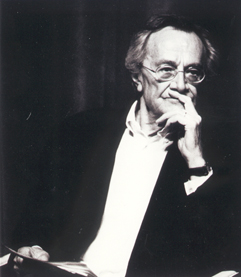The Two Most Influential Postmodernist Thinkers
This second post about postmodernism will consist of two greatest postmodernist thinkers and their contribution to postmodernism.
1. Jean François Lyotard.
Lyotard is a French philosopher. He opened the discussion for postmodernism in social theory with his groundbreaking publication ‘La Condition Postmoderne’ (The Condition Postmodern). His works stress the decline of meta-narratives or grand-narratives, as some scholars refer it. Meta-Narratives as defined in the previous post are sets of ideas governing what is right and wrong. For example, religion defines how to live a good life. By doing so, people who do not appeal to the characteristics of good man as defined by religion will be considered unfaithful, as bad people. Lyotard argues that this way of legitimating declines in a postmodern society. What is considered good can no longer be clearly separated from what is considered bad.
The decline of meta-narratives was triggered by communication development. Traditional communication means did not enable people to access the diverse and complex reality. Peopf accessing information. They were suddenly exposed to various sources of information and knowledge that all together endangered the position of meta-narratives in society as the sole way to legitimize something.
In a postmodern society, where more information and knowledge are easily accessed by society, a new form of evolution emerged. Meta-narratives suggested society to be homogenized. It means that all members of society should appeal to values, beliefs and norms as governed by meta-narratives if they wanted to be considered a good member of society. But, a postmodern society is characterized differently. Heterogeneity is more emphasized because people see things differently. They no longer see things from one point of view; instead they now see things within multiple points of view. Say, in simple way, in a traditional world, a good woman was expected to be a good house wife, a good mother, a good cook, did not work, submissive to their husbands. But, in a postmodern world, these kinds of view are no longer strictly functional. A good woman cannot be measured from that. What if she also becomes a successful businesswoman and at the same time she became a very loving and caring mother?
Thus, a postmodern society is marked with the blurred concept of right and wrong. To see thing from only one side is so naïve. A postmodern society will recognize the plurality over homogeneity. By this, what is called right is also very dependent on a contextual condition. Vice versa, what can be called wrong is also very contextual.
2. Jean Baudrillard
Another French philosopher, and may be called as the most important posmodernist thinker is Jean Baudrillard. Inspired by Roland Barthes, Baudrillard develops an enhanced theory of signs.
Signs as argued by Barthes serve as the medium in which myth is preserved. Signs then function as the source of legitimation. It is in align with Lyotard’s idea that suggests meta-narratives loose their function as the source of legitimation. Postmodern society then, as called by Baudrillard, lives in ‘sign culture’. This leads to what he terms as ‘simulacrum’.
 |
| Baudrillard |
‘Simulacrum’ is a copy of an image without original. It is now very difficult to distinct what can be termed as real and fake. For instance, anyone can now have the painting of Monalisa at their house. They can observe the very real painting of Monalisa without having necessarily to go out of their house. Thus, according to Baudrillard, reality implodes with imaginary.
It is now difficult to distinct what is reality and imaginary. It is all blurred, collapsed one into another. A postmodern society is characterized by this kind of trait. People even prefer to linger in the imaginary world because they think they experience reality from it. Say, a computer game namely The Sims. It is often cited as a perfect model of Baudrillard theory. In this game, you can control your characters. You can make your characters to be anything that you like. You can make your characters to be like you or to be a kind of person that you actually want to be in the real life. Thus, citing from Dominic Strinati, postmodernism is now interchangeable with popular culture.
Those are two key figures in Postmodernism. There are still other influential figures, but these two figures are the most influential moreover in the postmodernism as social theory sphere.
Suggested Readings
Storey, John. 2009. Cultural Theory and Popular Culture. 9th Ed.
In this latest edition, Storey elaborates more about postmodernism. His easy writings make a complicated postmodernism an easy matter to understand.
Strinati, Dominic. An Introduction to Theories of Popular Culture.
In this book, a more comprehensive discussion about postmodernism and current popular culture is given, but it does not introduce the basic theories of postmodernism as Storey’s book.



Comments
Post a Comment